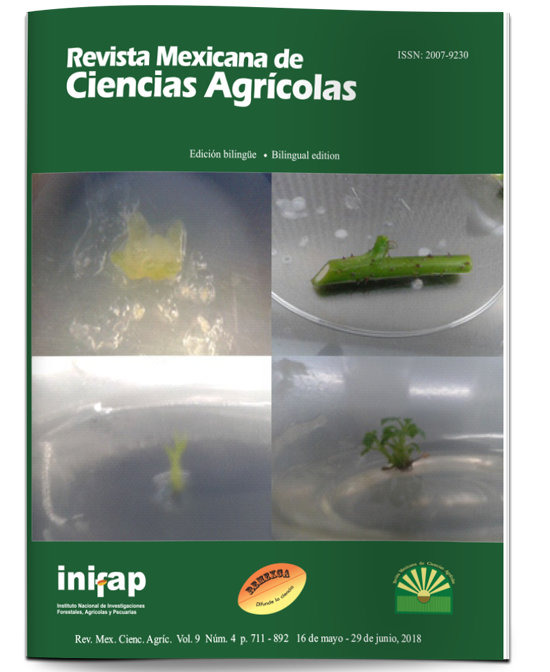HAM14F: mulatto wide chili hybrid for the North-Central Mexico Highlands
DOI:
https://doi.org/10.29312/remexca.v9i4.1405Keywords:
Capsicum annuum L., vegetable, yieldAbstract
The mulato wide chili is demanded mainly in dry or dehydrated state. In Mexico, as a basic ingredient of traditional dishes, it has great gastronomic, economic and social importance. In 2014, 1 878 ha of this type of chili were harvested nationally with a production of 3 869 t and an average yield of 2.1 t ha-1. Obtaining low yields in the producing areas, mainly in the North-Central High Plateau of Mexico, is due to the high use of unimproved or creole seed, which is estimated to be sowed 80% of the area dedicated to this crop. In order to mitigate the aforementioned problems, the hybrid mulato wide chili HAM14F was developed, which reaches a height of 80 to 95 cm and has good foliage coverage, 60 to 75 cm in diameter. It is considered early cycle because the flowering and maturation of the fruit occurs at 40 and 135 days after transplantation (ddt), respectively. It produces dark green fruits that turn dark brown with a strong brilliance in a mature state. This hybrid has an average open-air yield of 3.8 t ha-1, 21.1% higher than that of the AM-VR variety (3 t ha-1). For the aforementioned, HAM14F is considered a good alternative for the North-Central Plateau of Mexico.
Downloads
Downloads
Published
How to Cite
Issue
Section
License
The authors who publish in Revista Mexicana de Ciencias Agrícolas accept the following conditions:
In accordance with copyright laws, Revista Mexicana de Ciencias Agrícolas recognizes and respects the authors’ moral right and ownership of property rights which will be transferred to the journal for dissemination in open access. Invariably, all the authors have to sign a letter of transfer of property rights and of originality of the article to Instituto Nacional de Investigaciones Forestales, Agrícolas y Pecuarias (INIFAP) [National Institute of Forestry, Agricultural and Livestock Research]. The author(s) must pay a fee for the reception of articles before proceeding to editorial review.
All the texts published by Revista Mexicana de Ciencias Agrícolas —with no exception— are distributed under a Creative Commons License Attribution-NonCommercial 4.0 International (CC BY-NC 4.0), which allows third parties to use the publication as long as the work’s authorship and its first publication in this journal are mentioned.
The author(s) can enter into independent and additional contractual agreements for the nonexclusive distribution of the version of the article published in Revista Mexicana de Ciencias Agrícolas (for example include it into an institutional repository or publish it in a book) as long as it is clearly and explicitly indicated that the work was published for the first time in Revista Mexicana de Ciencias Agrícolas.
For all the above, the authors shall send the Letter-transfer of Property Rights for the first publication duly filled in and signed by the author(s). This form must be sent as a PDF file to: revista_atm@yahoo.com.mx; cienciasagricola@inifap.gob.mx; remexca2017@gmail.
This work is licensed under a Creative Commons Attribution-Noncommercial 4.0 International license.



